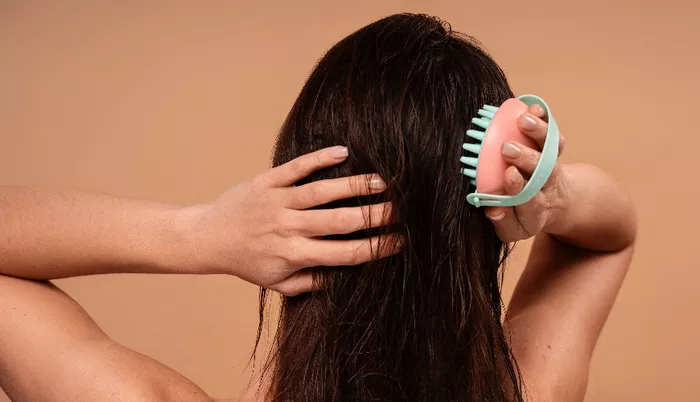Winter brings cozy sweaters and hot drinks, but it also brings harsh conditions that can damage your hair. Cold air, dry indoor heating, and strong winds strip moisture from your hair, leaving it dry, brittle, and prone to breakage.
This guide offers simple, actionable tips to keep your hair healthy and shiny all winter long.
Understanding Winter Hair Damage
Cold weather affects your hair in several ways:
- Low Humidity: Winter air lacks moisture, drying out your hair and scalp.
- Indoor Heating: Artificial heat reduces humidity indoors, further dehydrating hair.
- Temperature Changes: Moving between cold outdoors and warm indoors causes hair cuticles to expand and contract, leading to frizz and breakage.
- Wind: Strong winds tangle hair, causing friction and split ends.
Knowing these challenges helps you take targeted steps to protect your hair.
Moisturize and Hydrate Your Hair
Moisture loss is the main cause of winter hair damage. Combat it with these steps:
Use a Hydrating Shampoo and Conditioner
Choose sulfate-free shampoos with ingredients like shea butter, coconut oil, or argan oil.
Apply conditioner every time you wash, focusing on the ends. Rinse with cool water to seal moisture.
Deep Conditioning Treatments
Use a deep conditioner or hair mask once a week. Look for products with keratin, honey, or avocado oil.
DIY Option: Mix 2 tbsp olive oil + 1 tbsp honey. Apply to damp hair, cover with a shower cap, rinse after 30 minutes.
Leave-In Conditioners
Spray or cream leave-in conditioners protect hair daily. Apply to mid-lengths and ends after washing.
Natural Oils
Massage jojoba, almond, or argan oil into your scalp and hair. Leave overnight for intense hydration.
Adjust Your Washing Routine
Overwashing strips natural oils. Follow these tips:
- Wash Less Frequently: Aim for 2–3 times a week. Use dry shampoo between washes.
- Use Lukewarm Water: Hot water dries out hair. Rinse with cool water to lock in moisture.
- Gentle Techniques: Avoid scrubbing your scalp harshly. Use fingertips to massage shampoo gently.
Protect Hair from Cold and Wind
Wear a Hat or Scarf
Choose hats lined with silk or satin to reduce friction.
Tie a scarf over your hair to shield it from wind.
Avoid Going Out with Wet Hair
Wet hair freezes in cold air, making it brittle. Dry hair completely before heading out.
Protective Hairstyles
Braids, buns, or loose ponytails minimize tangles and breakage.
Minimize Heat Styling
Heat tools worsen dryness. If you must style:
- Use a Heat Protectant: Spray or serum forms a barrier against damage.
- Lower Temperature Settings: Keep blow dryers, straighteners, or curling irons below 400°F.
- Air-Dry When Possible: Let hair dry naturally 1–2 times a week.
Nourish Your Body from Within
Healthy hair starts with a balanced diet:
- Stay Hydrated: Drink 8–10 glasses of water daily.
- Eat Omega-3s: Include walnuts, salmon, or chia seeds to boost scalp health.
- Vitamins A and E: Eat spinach, carrots, and almonds to strengthen hair.
- Protein-Rich Foods: Eggs, lentils, and Greek yogurt support keratin production.
Trim Regularly and Treat Split Ends
- Get a trim every 6–8 weeks to remove split ends.
- Apply hair serums or oils to ends daily to prevent further splitting.
Fight Static and Frizz
- Use a Humidifier: Adds moisture to indoor air.
- Anti-Static Spray: Lightly spritz hair or run a dryer sheet over flyaways.
- Metal-Free Accessories: Plastic or wood combs reduce static.
Nighttime Hair Care Routine
- Silk or Satin Pillowcases: Reduce friction and prevent breakage.
- Loose Braid or Ponytail: Prevents tangling while you sleep.
- Apply Overnight Oil: Massage oil into ends and rinse in the morning.
Special Care for Color-Treated Hair
- Use Color-Safe Products: Sulfate-free shampoos prevent fading.
- Limit Sun Exposure: UV rays still damage hair in winter. Wear a hat on sunny days.
- Gloss Treatments: Enhance shine with semi-permanent color glosses.
Conclusion
Winter hair care requires extra moisture, gentle handling, and protection from the elements. By adjusting your routineusing hydrating products, covering your hair outdoors, and nourishing your body—you can maintain soft, healthy hair all season.
Consistency is key! Start these habits early to prevent damage and enjoy luscious locks even in the coldest months.
Related topics:
Winter Care for Transplanted Hair: Protect from Dryness and Dandruff
How Often to Wash Greasy Hair Guide?
How Long Does Blonde Dye Last?


